Classroom Analytics

What are some common challenges faced by educators when implementing data analytics in their classrooms ?
Educators face several challenges when implementing data analytics in their classrooms, including a lack of training and support, limited access to technology and data, time constraints, resistance to change, and privacy and ethics concerns. These challenges can make it difficult for teachers to effectively integrate data analytics into their teaching practices, potentially limiting the benefits that data-driven strategies can offer for improving student outcomes.

How can artificial intelligence be integrated into classroom teaching ?
Artificial intelligence (AI) can revolutionize classroom teaching by enhancing student engagement, personalizing learning experiences, and improving educational outcomes. Adaptive learning systems create personalized learning pathways and provide real-time feedback, while intelligent tutoring systems offer individualized coaching and progress tracking. Automated grading and assessment streamline the evaluation process, virtual learning assistants provide round-the-clock support, and data analytics tools inform instructional decisions. AI-powered group projects and peer feedback mechanisms facilitate collaborative learning environments. Integrating AI into classroom teaching has the potential to transform education by creating more engaging, personalized, and efficient learning experiences for all students.

Can data analytics be used to personalize learning experiences for individual students ?
Data analytics is a powerful tool that can be used to personalize learning experiences for individual students by collecting data related to student performance, preferences and behaviors. This allows educators to tailor instruction to meet the unique needs of each learner. Data analytics can improve student outcomes, provide tailored instructional approaches, and use resources more efficiently. It can also identify student needs, design personalized learning plans and enhance teaching practices. By leveraging the power of data analytics, educators can better understand their students' needs, design effective learning plans, and enhance their teaching practices to promote improved outcomes for all learners.
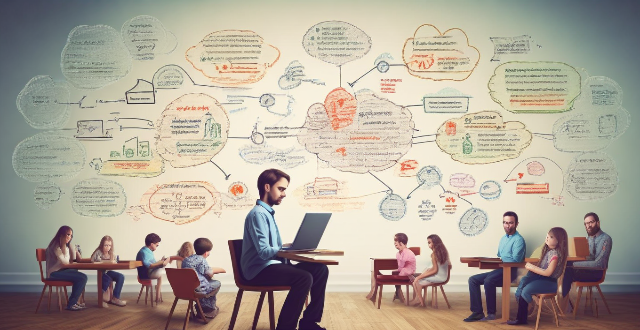
What are some benefits of using online learning resources compared to traditional classroom learning ?
Online learning resources offer advantages over traditional classroom learning, including flexibility and convenience, cost savings, personalized learning experiences, exposure to diverse cultures, and development of technology skills.
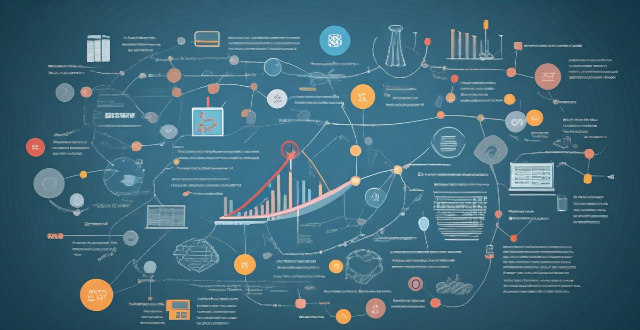
How can data analytics help identify areas where students may need additional support ?
Data analytics is a crucial tool in education as it helps identify areas where students may need additional support. It involves collecting and analyzing large sets of data to inform decision-making processes. Data analytics can be used to analyze student performance, track progress over time, and analyze behavior. Once areas for additional support are identified, personalized learning plans can be developed, collaboration between stakeholders can be facilitated, and continuous monitoring and adjustment can take place. Overall, data analytics provides valuable insights into student needs and promotes academic growth and success.

What are the benefits of using data analytics in education ?
Data analytics has become an increasingly popular tool in education, offering benefits such as improved student performance through personalized learning and early intervention, enhanced teaching practices with curriculum development and professional development, and better decision making with evidence-based decision making and transparency. As technology advances, data analytics is likely to become an even more integral part of the educational landscape.

Can remote education platforms replace traditional classroom learning ?
The text discusses the pros and cons of remote education platforms and concludes that they cannot fully replace traditional classroom learning due to lack of social interaction, difficulty with self-motivation, and limited hands-on experience. However, a combination of both methods may provide a well-rounded education.
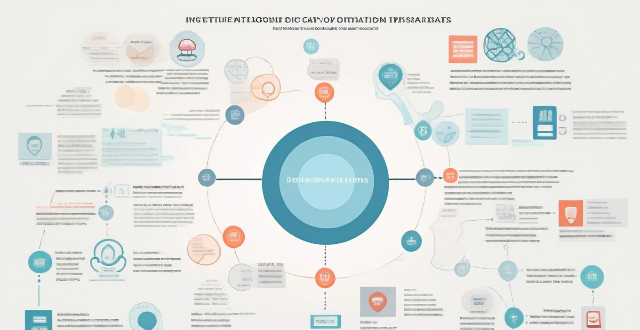
How can educational institutions use data analytics to improve student outcomes ?
Educational institutions can use data analytics to improve student outcomes by identifying areas of focus such as performance tracking, curriculum analysis, and student engagement. Implementing data-driven strategies like personalized learning, predictive analytics, and resource allocation can further enhance student success. Continuous evaluation and collaboration are key to measuring success and making necessary adjustments.

How can teacher training address cultural diversity in the classroom ?
In today's globalized world, cultural diversity is an increasingly important aspect of modern classrooms. Teacher training can play a crucial role in addressing this diversity by incorporating it into curriculum design, adapting teaching methods, providing professional development opportunities, and implementing fair assessment practices. By doing so, teachers can create inclusive classrooms where all students feel valued and supported, promoting equity and enhancing learning outcomes.

How does data analytics improve team performance in sports ?
Data analytics has transformed sports by providing teams with valuable insights into player performance, training programs, game strategy, and predicting outcomes. By leveraging advanced technologies and statistical methods, coaches and players can make more informed decisions that lead to improved performance on the field or court. Key benefits of data analytics in sports include identifying key performance indicators (KPIs), optimizing training programs, enhancing game strategy, evaluating player performance, and predicting outcomes. Overall, data analytics is a powerful tool for teams looking to gain an edge over their competitors and achieve success in their sport.

What are the benefits of using flipped classroom models as an innovative teaching strategy ?
The flipped classroom model is an innovative teaching strategy that reverses the traditional learning environment by delivering instructional content outside the classroom and using class time for interactive learning activities. This approach offers several benefits, including enhanced student engagement, improved student performance, optimized classroom time, increased teacher efficiency, promotion of lifelong learning skills, cultivation of a collaborative environment, support for differentiated instruction, encouragement of parental involvement, and flexibility for teacher innovation. Overall, the flipped classroom model empowers both students and teachers to make the most out of their educational experience by leveraging technology, fostering engagement, and promoting a culture of collaboration and lifelong learning.

What are some innovative approaches to incorporating physical activity into daily classroom routines ?
Incorporating physical activity into daily classroom routines is essential for student development. Brain breaks, movement stations, active learning games, outdoor experiences, and mindful moments are effective ways to promote physical health, cognitive abilities, social skills, and emotional well-being. Examples include stretching exercises, dance parties, yoga poses, math hoops, word cones, chair yoga, scavenger hunts, Jeopardy! relay races, spelling jump rope, nature walks, field trips, outdoor classrooms, breathing exercises, body scan meditations, and gratitude journaling.

What role does data analytics play in the development of sports equipment ?
Data analytics is crucial in the development of sports equipment. It helps manufacturers collect and analyze data from sensors, wearables, and performance tracking systems to gain insights into how athletes use their equipment. This information can be used for performance evaluation, athlete feedback, customization, injury prevention, and marketing and sales strategies. By leveraging data analytics, manufacturers can create more effective and efficient sports equipment that meets the needs of athletes and consumers alike.

How do you create an inclusive classroom environment for students with diverse special education needs ?
Creating an inclusive classroom for students with diverse special education needs is essential. Strategies include differentiated instruction, Universal Design for Learning (UDL), collaborative learning, positive classroom culture, and professional development. These approaches ensure equal opportunities for all students to learn and thrive.

How can data analytics be used to measure teacher effectiveness and performance ?
Data analytics can be a powerful tool for measuring teacher effectiveness and performance. It allows administrators, educators, and policymakers to gain insights into various aspects of teaching and learning, leading to more informed decision-making and improvements in educational outcomes. Here's how data analytics can be leveraged to assess teacher performance: 1. Identifying Key Performance Indicators (KPIs): To begin with, it is essential to identify the key performance indicators that will be used to measure teacher effectiveness. These KPIs may include student achievement scores on standardized tests, classroom observations and evaluations, student engagement and participation levels, parent and student feedback surveys, and teacher attendance and professional development activities. 2. Collecting and Analyzing Data: Once the KPIs are established, data needs to be collected from various sources, such as student records, observation reports, and survey responses. This data should then be analyzed using statistical methods and data visualization techniques to identify patterns, trends, and correlations. 3. Interpreting Results and Making Informed Decisions: After analyzing the data, it is crucial to interpret the results and make informed decisions based on the findings. This process involves considering contextual factors, such as school resources, student demographics, and external influences, when evaluating teacher performance. 4. Continuous Monitoring and Feedback Loop: Finally, it is essential to establish a continuous monitoring system and feedback loop to ensure ongoing improvement in teacher effectiveness. This involves regularly collecting and analyzing data, providing constructive feedback to teachers, and implementing changes based on the insights gained from the data.

How do you use data analytics to improve your digital marketing efforts ?
In the digital age, data analytics has become an indispensable tool for improving marketing strategies. By analyzing consumer behavior and preferences, businesses can tailor their marketing efforts to better suit their target audience, ultimately leading to increased engagement and conversion rates. To improve your digital marketing efforts using data analytics, follow these steps: 1. Identify Key Performance Indicators (KPIs) based on your marketing objectives such as increasing website traffic or boosting sales. 2. Collect and analyze data using tools like Google Analytics and social media analytics platforms to identify trends and areas for improvement. 3. Optimize your marketing strategy by adjusting content, creating targeted campaigns, and refining ad spend based on performance. 4. Continuously test and refine your approach through A/B testing and iterating based on results to optimize performance. By integrating data analytics into your digital marketing efforts, you gain valuable insights that allow you to make informed decisions and optimizations. This systematic approach not only enhances the effectiveness of your marketing campaigns but also helps you stay ahead in a competitive market. Remember, the key is to continuously monitor, analyze, and adapt based on the data you collect.

What are some best practices for integrating data analytics into educational curriculum planning ?
Integrating data analytics into educational curriculum planning can significantly improve the quality of education by enabling educators to make data-driven decisions. Here are some best practices for incorporating data analytics into your curriculum planning process: 1. Establish clear objectives and identify key performance indicators (KPIs) that will help you measure success in achieving these objectives. 2. Collect relevant data from appropriate sources, such as student performance records, attendance rates, or feedback surveys, and ensure its accuracy and completeness. 3. Analyze the data using suitable tools like spreadsheet software, specialized data analysis programs, or machine learning algorithms, and interpret the results to identify patterns, trends, and areas for improvement in your curriculum planning. 4. Implement changes based on the analysis by developing action plans outlining how you will use the insights gained to modify your curriculum planning and monitor their progress over time. 5. Involve stakeholders like teachers, administrators, parents, and students in the process, keeping them informed about how data analytics is used to enhance educational experiences and outcomes. 6. Continuously evaluate and refine your approach by regularly reviewing new data and adapting to changes in educational needs and advancements in data analytics technology.

What role does data privacy play in the use of data analytics in education ?
Data privacy is a crucial aspect of educational data analytics, ensuring the protection of student information, compliance with legal frameworks, and building trust among stakeholders. It encompasses measures such as maintaining confidentiality, integrity, and availability of data, adhering to regulations like FERPA, and obtaining explicit permission from students and parents. Challenges include potential misuse of data, bias, and discrimination. Best practices involve developing clear policies, implementing technical measures like encryption and access controls, and educating staff and students about their rights. By addressing these challenges and implementing best practices, educational institutions can harness the power of data analytics while safeguarding the privacy rights of their students.
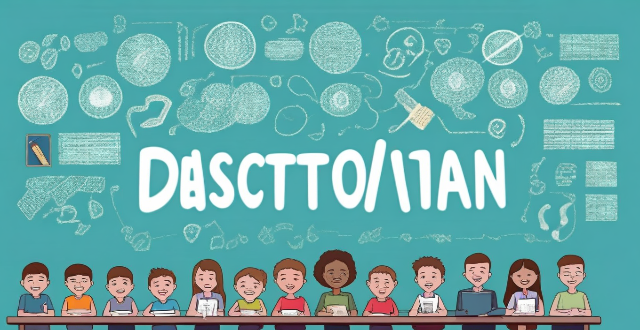
How can parents and teachers work together to address behavioral issues in the classroom ?
This text discusses the importance of collaboration between parents and teachers in addressing behavioral issues in the classroom. It emphasizes the impact of behavior on a student's academic performance, social interactions, and overall well-being, and suggests strategies for effective communication, positive reinforcement, clear expectations, differentiated interventions, and home-school collaboration. The roles and responsibilities of teachers, parents, and students are also outlined, along with challenges and solutions to overcome communication barriers, deal with resistant parties, and address complex behavioral issues. Case studies and examples are provided to illustrate successful interventions and common pitfalls, emphasizing the importance of continuous evaluation and improvement. The conclusion recaps key points and calls for active participation and ongoing support from both parents and teachers to effectively address behavioral issues in the classroom.

To what extent do technological advancements (like improved equipment and analytics) influence sports performance at the highest level ?
Technology has significantly impacted sports performance through improved equipment, advanced analytics, and enhanced training methods. Lightweight materials, aerodynamic designs, and customized gear have boosted athlete performance. Safety measures and recovery tools have minimized injuries and accelerated healing. Smart devices and simulation tools aid efficient training. Advanced analytics aid in performance tracking, strategy development, and team management. However, these advancements may create disparities between teams with unequal access to technology. They also raise debates on skill versus technology's role in sports. Despite concerns, technology enhances fan engagement through interactive experiences and data visualization. As technology advances, governing bodies must ensure equitable access and maintain fair competition while embracing its role in shaping the future of sports.

How can data analytics be used to inform school policy decisions and resource allocation ?
Using data analytics can greatly inform school policy decisions and resource allocation. By analyzing data, schools can identify areas for improvement, personalize learning experiences, evaluate teacher performance, allocate resources effectively, and enhance student support services. This approach leads to improved student outcomes, teaching quality, and resource use.

How can educational psychology help in classroom management ?
Educational psychology helps in classroom management by providing insights into student behavior, motivation, learning styles, and emotional needs. By understanding these factors, teachers can create effective strategies for managing challenging behaviors, promoting student motivation, tailoring teaching styles to different learning styles, enhancing student-teacher relationships, and addressing emotional needs. This leads to a positive and effective learning environment for all students.
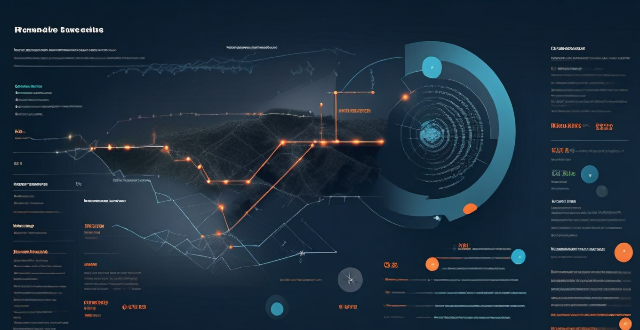
What role does data analytics play in modern sports ?
Data analytics is a crucial tool in modern sports, revolutionizing training, strategy, and performance. It helps track and evaluate performance metrics, prevent injuries, inform game strategies, identify talented athletes, and enhance fan engagement.
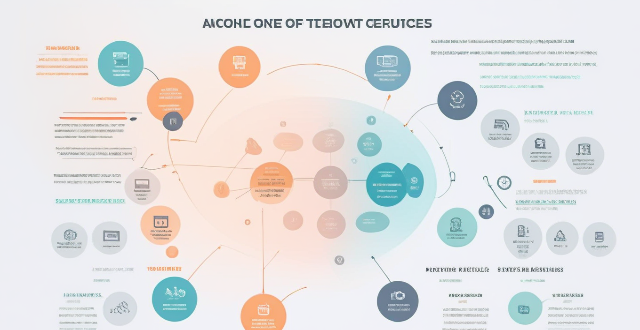
What role does data analytics play in modern sports coaching ?
Data analytics has become an integral part of modern sports coaching, helping coaches make informed decisions about training, game strategy, injury prevention, and recruitment. By analyzing player performance during training and games, coaches can identify areas where players need improvement and create personalized training programs to address those weaknesses. Data analytics also plays a crucial role in developing game strategies by analyzing opponents' strengths and weaknesses, identifying patterns in their gameplay, and developing effective counter-strategies. Additionally, data analytics can help prevent injuries by monitoring player workload and fatigue levels, ensuring that players are not overexerting themselves and adjusting training accordingly. Finally, data analytics is essential for recruitment and talent identification, allowing coaches to evaluate potential recruits' performance and compare them to existing players within the team.

What is the connection between educational psychology and cultural diversity in the classroom ?
The text discusses the importance of integrating educational psychology and cultural diversity in classroom settings to enhance learning experiences, social skills, and academic achievement. It highlights the benefits of cultural diversity in education, including enhanced learning experiences, improved social skills, and increased academic success. The role of educational psychology is also emphasized, as it provides insights into how cultural diversity affects student learning and development. Key concepts related to cultural diversity in educational psychology include cognitive development, motivation, social interaction, and assessment. Strategies for integrating cultural diversity into educational psychology practices are also discussed, such as culturally responsive teaching, inclusive curriculum design, collaborative learning, and professional development opportunities. Overall, the text underscores the significance of addressing cultural diversity in the classroom through educational psychology principles and practices.

What role does machine learning play in sports analytics ?
Machine learning is transforming sports analytics by analyzing player performance, team strategies, and game outcomes. It helps evaluate players' strengths and weaknesses, predict future performance, and develop training plans. Machine learning also aids in understanding how different team strategies affect game outcomes and predicting game results based on various factors. As technology advances, we can expect more innovative applications of machine learning in sports.

Can social distancing be implemented in schools and universities effectively ?
Social distancing is crucial to prevent the spread of infectious diseases, but implementing it in educational institutions like schools and universities can be challenging. Challenges include limited classroom space, managing student interaction outside of the classroom, and ensuring staff training and compliance. Effective strategies for implementing social distancing in these environments include classroom redesign, virtual learning options, signage and reminders, and monitoring and enforcement. By prioritizing health and safety, educational institutions can contribute to controlling the spread of infectious diseases while continuing to provide quality education.

What is educational psychology ?
Educational psychology is a subfield of psychology that focuses on the learning process and its influencing factors. It aims to understand students' learning, thinking, and development over time, as well as how teachers can support their educational needs. Key concepts include learning theories, cognitive development, motivation, classroom management, and assessment and evaluation. Applications of educational psychology include curriculum design, special education, counseling and mental health services, teacher professional development, and research. By applying its principles, educators can create effective teaching strategies, foster positive classroom environments, and improve student outcomes.

How can data analytics help identify areas for energy efficiency improvements in industry ?
Data analytics is crucial for identifying opportunities for energy efficiency improvements in industry. It enables real-time and historical monitoring, benchmarking, process optimization, predictive maintenance, and demand response management. These insights help companies reduce energy waste, cut costs, and minimize environmental impact.

What are some potential ethical concerns surrounding the use of data analytics in education ?
The use of data analytics in education can provide valuable insights into student performance and help educators make informed decisions. However, there are several potential ethical concerns that must be considered when using data analytics in this context: 1. Privacy and Confidentiality: Schools and districts should implement strict data security protocols and ensure that all staff members who have access to student data are trained on how to handle it appropriately. Additionally, parents and students should be informed about what data is being collected and how it will be used, and they should have the opportunity to opt out of any data collection or analysis processes if they choose. 2. Bias and Discrimination: To mitigate the risk of bias and discrimination, it is crucial to ensure that the algorithms used for data analytics are transparent and explainable, so that educators and administrators can understand how they work and identify any potential biases. Schools and districts should also regularly review their data analytics practices to ensure that they are not discriminating against any particular group of students. 3. Informed Consent: Students (and their parents) should be fully informed about what data is being collected, how it will be used, and what benefits or risks may result from its use. They should also have the opportunity to opt out of any data collection or analysis processes if they choose. Schools and districts should develop clear policies and procedures for obtaining consent from students and parents. 4. Misinterpretation and Misuse of Data: Educators and administrators should receive proper training on how to interpret and use data analytics effectively. Additionally, schools and districts should establish clear guidelines for how data analytics should be used in decision-making processes and encourage open communication between stakeholders to avoid misunderstandings or misinterpretations.